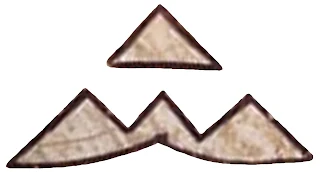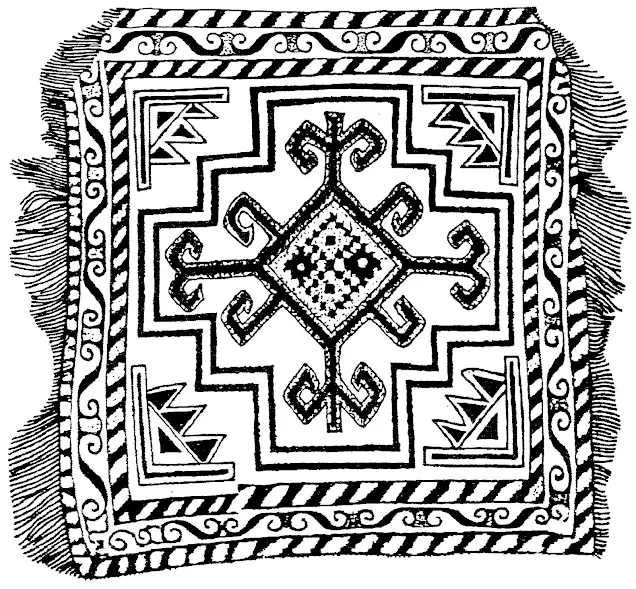Az Acoma Pueblo egy közel 5000 lakosú indián közösség, elismert törzsi terület, amely az Acoma Indián Rezervátum területén található Új-Mexikó államban (USA). Az acoma indiánok több, mint 2000 éve laknak ezen a területen, az Egyesült álamok egyik legrégebben egy helyen lakó közössége. A lakosság lélekszáma jelentősen csökkent az Európából behurcolt betegségek és a spanyolok által 1599-ben rendezett mészárlás következtében. Az égi városként emlegetett, sziklafennsíkra épült városukban - ahol nincs sem villany, sem vízvezeték, sem csatornázás - kb. 30 állandó lakos él. A lakosok száma csak a turistaszezonban nő meg. A navahók és az apacsok szomszédai. Az acomák hagyományos vallása hangsúlyozza az emberi élet és a természet harmóniáját. A Nap a Teremtő isten képviselője. A helyi agyagra épült, ezer évnél régebbi gyökerekből táplálkozó fazekasságuk nem csak a gazdasági jelentősége miatt fontos, hanem az igen régi jelek megőrzése miatt is.
Acoma Pueblo is a Native American community of nearly 5,000 inhabitants, a recognized tribal territory, located on the Acoma Indian Reservation in the state of New Mexico (USA). The Acoma Indians have lived in this area for more than 2,000 years, one of the oldest living communities in the United States. The population decreased significantly as a result of diseases introduced from Europe and the massacre organized by the Spanish in 1599. There are approximately 30 permanent residents living in their city, referred to as the city in the sky, built on a rocky plateau, where there is no electricity, water supply, or sewerage. The number of residents increases only in tourist seasons. Their neighbours are the Navajos and Apaches. The traditional religion of the Acomas’ emphasizes the harmony of human life and nature. The Sun represents the Creator God. Their pottery, built on local clay and nourished by roots more than a thousand years old, is important not only because of its economic importance, but also because of the preservation of very old signs.
Figure 1. The central motif of the Acoma pot, made in 1910, is a world model
Alább az acoma edényen lévő szavakat és mondatokat a magyar hieroglif írás segítségével olvasom el. Nyilvánvaló, hogy az indiánok nem pontosan ugyanígy hangzósították (olvasták ki) ezeket a jeleket, azonban az is természetes, hogy mind a jelentésben, mint a hangalakban lehetnek párhuzamok, amelyeket kutatni kell. Az indián hieroglifikus szövegek megértésének és elolvasásának megkísérlése jelentősen előreviheti a magyar és az indián történet kezdeteinek kutatását, mert ezek - talán a jégkorszak idején, esetleg azt követően - közös pontokat tartalmaztak. A magyarok a hunok utódai, a genetikusok szerint pedig a hunok őseinek egy csoportja vándorolt át Amerikába s lett néhány azonosítható indián törzs őse. A székely írással rokon jelek azonban mindhárom Amerikában egységesen elterjedtek, ami további magyarázatot kíván. Azonos jelkészletet használó, azonos vallású szibériai népesség több hullámban történt bevándorlására gondolhatunk, vagy arra, hogy egy domináns csoport jelhasználata és vallása egész Amerikában elterjedt. A felmerülő kérdésekre az indiánok népi jelkészletének jobb megismerése adhat választ.
Below, I read the words and sentences on the Acoma pot, using the Hungarian hieroglyphic script. It is clear, that the Indians did not sound loud (read) these signs in exactly the same way, but it is also natural that there may be parallels in both the meaning and the sound forms, which should be researched. Attempting to understand and read Native American hieroglyphic texts, can significantly advance the research of the beginnings of Hungarian and Native American history, because they contained common points - perhaps during the Ice Age, perhaps afterwards. The Hungarians are the descendants of the Huns, and according to geneticists. A group of the ancestors of the Huns migrated to America and became the ancestors of some identifiable Indian tribes. However, signs related to the Szekler script, are uniformly spread in all three Americas, what requires further explanation. What we can think of is the immigration of a Siberian population of the same religion using the same set of signs in several waves, or that the use of signs and religion of a dominant group spread throughout America. The questions can be answered by a better knowledge of the folk signs of the Indians.
Figure 2. The structure of the world model is defined by the hieroglyph of the Earth (left) and the Eurasian prototype of the letter "f" of the Szekler script (right)
3. ábra. Az edényen olvasható Jóma ligatúra (balra) egy Eurázsiában és Amerikában egyaránt tisztelt kőkori isten nevét rögzíti, akinek a nevéből az ima szavunk is keletkezett, az ábra jobb oldalán a székely írás "m" (magas) és "j" (jó "folyó, Isten") jelei láthatók, a ligatúra a Tejút (az Istennel azonos "magas folyó") képjelekből alkotott ábrázolása
Figure 3. The so called Jóma ligature that can be read on the vessel (left) records the name of a Stone Age God revered in both Eurasia and America, from where the name our word “ima” = prayer, was also created on the right side of the figure the Szekler script ‘m’ “magas” = high and ‘j’ “jó” = good, “folyó, Isten” = river, God, are visible. The ligature is a representation of the Milky Way (the “magas folyó” = high river, identical to God
4. ábra. A Magas sar kő (mai magyarsággal: Magasságos úr köve) mondatjel (balra), valamint a székely írás "m", "s" és "harmadik k" jele
Figure 4. The “Magas sar kő” = today's Hungarian: “Magasságos úr köve” = Stone of the Mighty Lord sentence-sign (left) and the "m", "s" and "third k" signs of the Szekler script
The sentence-marks shown in Figures 3 and 4 on the pot are connected to each other, so it is possible that they should be read together. Their joint reading is “Jóma sar magas köve”, in today's Hungarian: “Jóma Úr magas köve” = .Mighty stone of Lord Jóma.
Figure 5. On the side of the Bronze Age mug from Tiszalök. The sentence “Jó magas köve” = High stone of God (where “Jó” is the name or epithet of God) appears in several copies, a parallel to the sentence Acoma
6. ábra. Az alucsajdengi hun jelvény Jóságos Lyukó magas köve mondata szintén az acoma szöveg párhuzama, az ábra jobb szélén a székely írás "j", "ly", "m" és "harmadik k" jele
Figure 6. The sentence of the “Jóságos Lyukó magas köve” = high stone of Jóságos Lyukó, on the Hun badge of Aluchaideng, Ordos, China (Inner Mongolia) is also a parallel of the Acoma text, on the right edge of the figure are the signs of the Szekler script "j", "ly", "m" and "third k"
7/a. ábra. A világmodell sarkain alkalmazott acoma Magas sar (mai magyarsággal: Magasságos úr) mondatjel (balra) és a megfelelő székely jelek: a "harmadik k" és az "s" rovásbetű
7/a. figure. The Acoma sentence “Magas sar” in today's Hungarian: “Magasságos úr” = Mighty God sign used on the corners of the world model (left) and the corresponding Szekler signs: the "third k" and "s" runic letters
7/b. figure. Inside (in the negative) of the corner symbol of the Acoma world model, you can also read the phrase “Sar országa”, in today's Hungarian: “Úr országa” = Land of God)
Figure 8. Acoma on the Kyrgyz carpet is shown on Figure 7/a. with the parallel of the corner-ligature
9. ábra. Az acoma edény (balra) és egy korondi korsó (jobbra) Magas kő mondatjele egyaránt az égbe vezető út jelképe, hegyekből rakott lépcső rajza
Figure 9. The Acoma pot (left) and a jar from Korond (right), the “Magas kő” = High stone, sentence sign are both a symbol of the road leading to heaven, the drawing of a staircase made of mountains
Literature
Varga Géza: Hozzászólás Sági Károly Árpád-kori varázslás régészeti emlékeiről írt tanulmányához
(Géza Varga: Commentary on Károly Sági's study on the archaeological remains of Árpád-era sorcery)
(Géza Varga: István Tóth "Stems of the progenitrix" c. his volume on the Hungarian-Indian linguistic kinship)
(Géza Varga: Hungarian hieroglyphic script)
(Géza Varga: Indian content)
(Géza Varga: The "third k" sign of the Szekler script)











Nincsenek megjegyzések:
Megjegyzés küldése